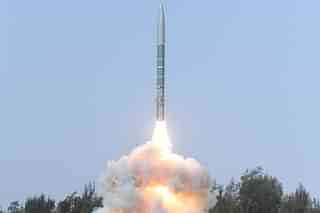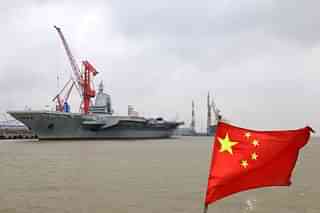World
From Kuala Lumpur To Singapore: Malaysia's High-Speed Rail Resurgence Sparks China's Pan-Asia Vision
Amit Mishra
Mar 12, 2024, 04:09 PM | Updated Mar 13, 2024, 06:12 PM IST
Save & read from anywhere!
Bookmark stories for easy access on any device or the Swarajya app.
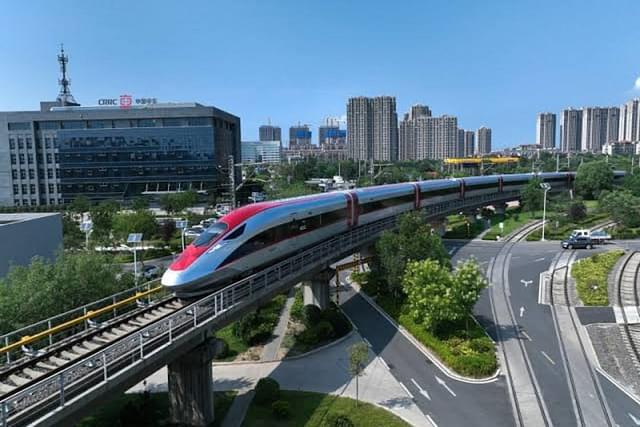
A high-speed rail line from China to south-east Asia could soon be a reality.
The Malaysian government is once again working on building the country's first high-speed railway that will connect its capital, Kuala Lumpur, to neighbouring Singapore, having invited expression-of-interest from private players.
It was in 2016 that Malaysia and Singapore signed a bilateral agreement to construct a high-speed rail (HSR) link, a seminal moment for the neighbours with an acrimonious past.
The 350-kilometre link would have reduced travel time between Kuala Lumpur and Singapore’s central business district to about 90 minutes, compared to the current three-and-a-half hours by air — on the world’s second-busiest flight route — and five hours by road.
However, the project fell victim to political turmoil in Malaysia and had to be eventually cancelled in December 2020, before being revived in January this year when Sultan Ibrahim of Johor became Malaysia's new king.
The latest version of the project comes amidst the backdrop of new high-speed rail lines in Southeast Asia.
In October 2023, Indonesia successfully launched Southeast Asia’s first high-speed rail, connecting 142 kilometre between Jakarta and Bandung, the West Java provincial capital, and a popular tourist destination in less than an hour.
In early December 2021, Laos, China's tiny landlocked southern neighbour, inaugurated a semi-high-speed railway, boasting speeds of up to 160 kph. Spanning 1,035 kilometres, the route traverses Laos' mountainous terrain, connecting the southeastern Chinese city of Kunming with Vientiane, the capital of Laos.
Further south, Thailand is also building a high-speed rail that will eventually link the Chinese city of Kunming to Bangkok and is set to be completed by 2026.
Pan-Asia Railway Network
A recurring motif among all these projects is their alignment with China's high-speed rail diplomacy under the "One Belt, One Road" initiative. Beijing not only contributes significant funding but also provides technology for these endeavours.
Yet, China's ambitions for high-speed rail in Southeast Asia extend beyond mere infrastructure development; they aim to establish a pan-Asia railway network.

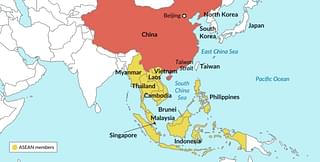
As part of this grand scheme, China endeavours to construct a 3,000 kilometre railway network originating from Kunming in Southwest China. This network will pass through Yuxi in China, extend to Vientiane in Laos, continue onward to Bangkok in Thailand, reach Kuala Lumpur in Malaysia, and culminate in Singapore.
The Kunming-Yuxi-Vientiane-Bangkok-Kuala Lumpur-Singapore line forms the backbone of this railway project, complemented by two additional routes, one to the west and the other to the east.
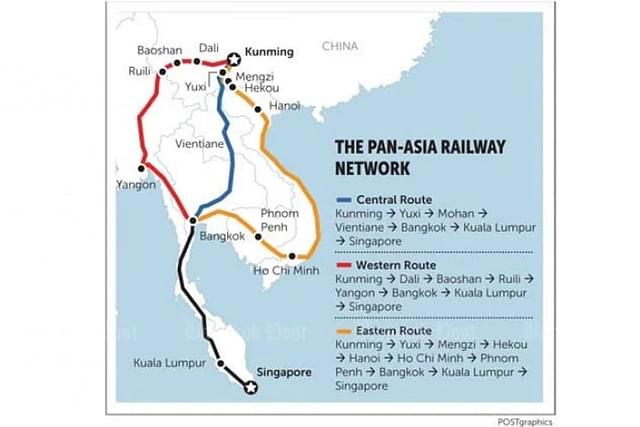
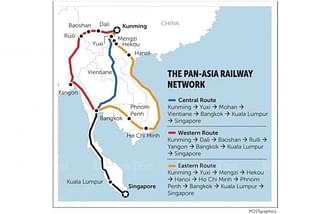
Once completed, the network will interlink smaller nations in continental Southeast Asia, drawing them closer to China, the world's second-largest economy.
For China, with just a decade of high-speed rail operation experience, the HSR infrastructure will serve as a conduit to the Eurasian continent, without having to rely on its coastal areas, which are vulnerable to potential Western sanctions or naval blockades.
Singapore Connection
Situated at the southern tip of the Malay Peninsula, Singapore is the most developed member of the Association of Southeast Asian Nations (ASEAN). It also serves as the gateway to the Strait of Malacca, a critical chokepoint for maritime traffic, linking the oil-rich Middle East to the energy-thirsty East Asia.
For Beijing, establishing a rail link to Singapore facilitates its penetration into Southeast Asia, potentially swaying ASEAN towards accommodating Chinese interests, including its territorial claims in the South China Sea.
However, China's plans for Singapore hit a roadblock when the deal was canceled in 2020, purportedly due to apprehensions regarding diverting billions of ringgit into a project that risked becoming a white elephant.
However, as the Malaysian government has already indicated hesitancy in directly financing the project, preferring privately backed proposals, it effectively opened a backdoor for Chinese involvement.
Among these proposals, a Chinese consortium consisting of China Railway Construction, China Communications Construction, and the Export-Import Bank of China, is garnering favourable attention for its financing strategy.
Should China secure entry into the Singapore high-speed rail project, it would fortify its 'political train' strategy, aimed at deepening connections with Southeast Asia.
Save & read from anywhere!
Bookmark stories for easy access on any device or the Swarajya app.
Introducing ElectionsHQ + 50 Ground Reports Project
The 2024 elections might seem easy to guess, but there are some important questions that shouldn't be missed.
Do freebies still sway voters? Do people prioritise infrastructure when voting? How will Punjab vote?
The answers to these questions provide great insights into where we, as a country, are headed in the years to come.
Swarajya is starting a project with an aim to do 50 solid ground stories and a smart commentary service on WhatsApp, a one-of-a-kind. We'd love your support during this election season.
Click below to contribute.



